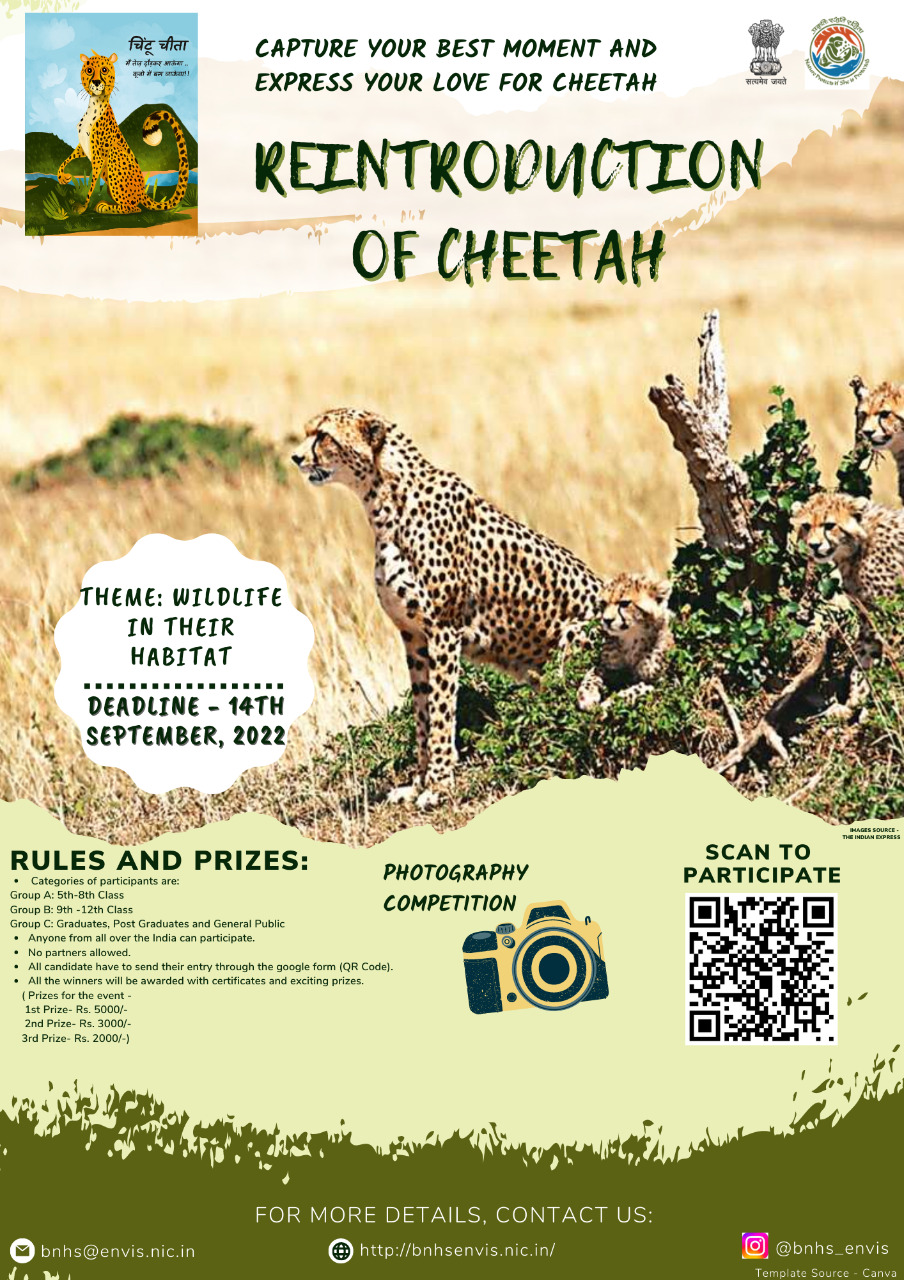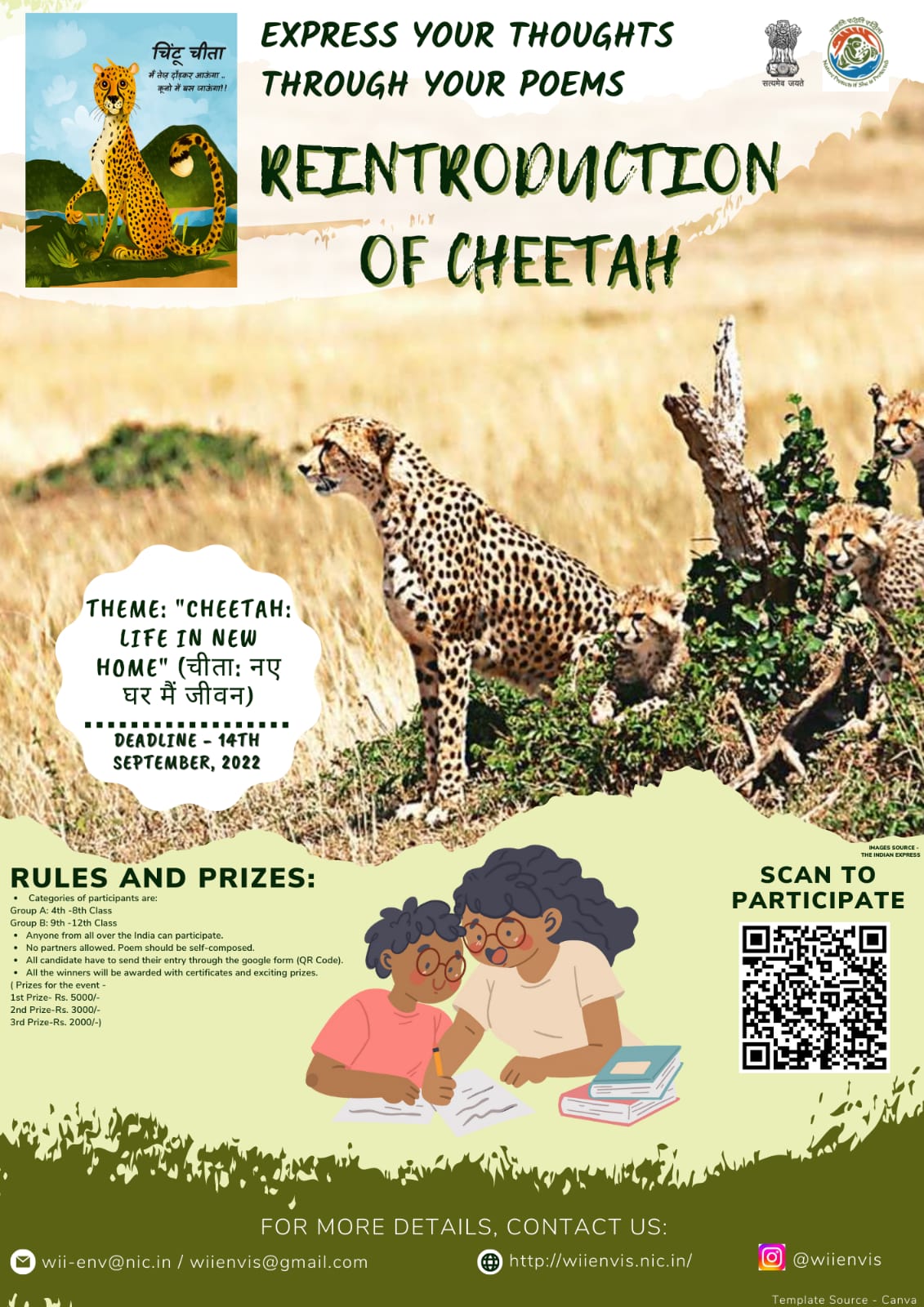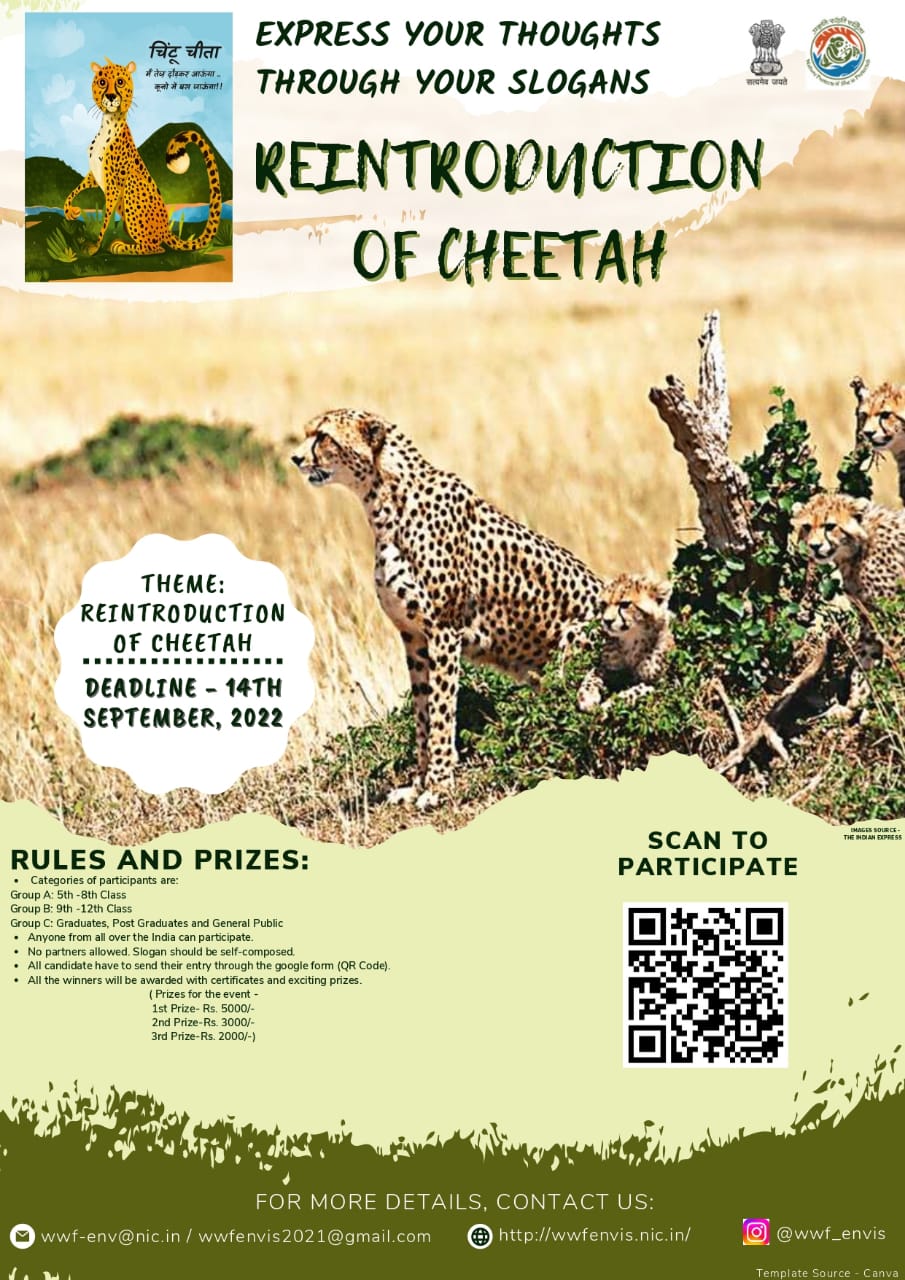
India has the long history of wildlife conservation. One of the most successful wildlife conservation ventures ‘Project Tiger’ which was initiated way back in 1972, has not only contributed to the conservation of tigers but also of the entire ecosystem. The Project Elepahnt launched in the year of 1992 to protect and conserve the Asian elepahnts in India. Similarly, many successful reintroduction programs have been carried out in India. In continuation of this, the reintroduction of Cheetah which we have lost recently, is a one step ahead and a milestone in the history of wildlife conservation India.

Cheetah are the fastest land mammals, and have been documented as reaching speeds up to 110 km per hour. In the wild Cheetahs live for a maximum of 14 -15 years for females and 10-12 years for males. The gestation period is 90 days and litter size is 2-5 cubs. The Cheetahs weigh approximately 40-60 kg and smaller than common leopard.
Distribution
Historically, Asiatic cheetahs had a very wide distribution in India extending from Gujarat passing through Maharashtra, Madhya Pradesh, Uttar Pradesh, Chhattisgarh, Jharkhand and Odisha in the south till Tamil Nadu.
Approximately 7,000 cheetahs are remaining in 9% of their global range. Cheetahs are found in 17 countries (Algeria; Angola; Benin; Botswana; Burkina Faso; Central African Republic; Chad; Ethiopia; Iran; Kenya; Mali; Mozambique; Namibia; Niger; South Africa; Tanzania; Uganda; Zambia; Zimbabwe)
Re Introduction
In order to revive the past glories and to restore the grassland habitats, the Government of India has decided to introduce the Cheetah, the only large carnivore species that went extinct in Independent India. The Cheetahs for release into the selected sites in India would be sourced from populations in African Continent depending on the suitability and continued availability of animals. This international endeavour will not only strengthen the efforts for global conservation of the Cheetah but also the reestablishment of this species in its historical range. The Objectives of the reintroduction Cheetahs are as follows;
- Re-establish the functional role of the Cheetah in representative ecosystems within its historical range. Here the cheetah will serve as a flagship to save not only its prey-base, but also other endangered species of the grassland and semi-arid ecosystems. Resources invested in these highly exploited and neglected systems will ensure better management and restore their ecosystem services for the country.
- Contribute to the global effort towards conservation of the Cheetah as a species.
- Additionally, Cheetah introduction is likely to improve and enhance the livelihood options and economies of the local communities.
The South African population of Cheetah comprising of Acinonyx jubatus jubatus sub-species was found to be equally close genetically as any other sub-species to the extinct Indian cheetah and was the only population that could be sourced for Indian founders without detrimental impacts on the source population, and provide the required number of behaviourally appropriate, genetically diverse, and healthy cheetah for the Indian introduction program.
The Ministry of Environment Forest and Climate Change (NTCA & WII) in collaboration with Government of Madhya Pradesh has prepared an action plan for introduction of cheetah in India with emphasis on first release site- Kuno National Park involving various stakeholders.
Formal communication from Government of India to the Government of South Africa and Namibia requesting to consider granting permission for export of Cheetahs to India to aid the Government of India in its effort to reintroduce the species to its natural habitat in India has already been done. For the first release site, the Kuno National Park, all preparatory works such as completion of fence, water, and removal of carnivores from inside the cheetah enclosure have been completed. The release of Cheetah is an important step towards wildlife conservation in India and also it is pride moment for every Indian Citizen.
Read More About
» Kuno National Park
» Publications (Action Plan and Brochure)
» Photogallery
Events
| Competitions |
Links to Submit |
 |
Interested Schools may participate in Photography Competition - Theme: "Wildlife In Thier Habitat".
Last date to submit entries is 14th Septebmer, 2022
» Link to submit the photo
|
 |
Interested Schools may participate in Short Poem Competition - Theme: "Cheetah: Life in New Home".
Last date to submit entries is 14th Septebmer, 2022
» Link to submit the poem
|
 |
Interested Schools may participate on Slogan Competition - Theme: "Reintroduction of Cheetah".
Last Date to submit Entries is 14th September, 2022
» Link to submit the slogan
|
Source: MoEF&CC